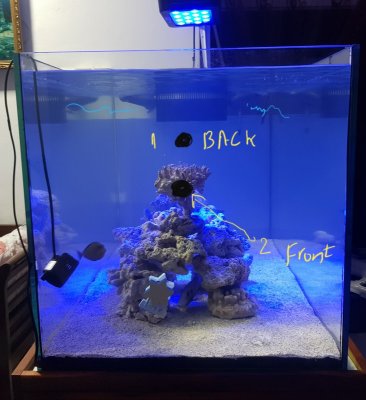


Third party controllers can also provide features and flexibility that the manufacturers controller can’t. The better controllers allow you to control multiple powerheads and create all the wave patterns that you would need. The controllers vary widely in their abilities from manufacturer to manufacturer. These powerheads can be adjusted from 0% to 100% of their capacity and usually come packaged with a controller. It’s suggested that you try to purchase a more robust quality powerhead and try to use longer wave cycles to cut down on wear and tear.ĭC powerheads require a power brick to convert the AC power to DC. This process of frequently turning on and off of the powerhead can be quite harsh and shorten the life of the powerhead. They can be used for wave making but they have to be toggled on and off to do so. When on they run at 100% of their capacity. They are technically more efficient because of this but they are not able to be adjusted in speed. AC versus DC PowerheadsĪC powerheads run on standard current from a wall outlet and require no power brick to convert the power. This way all parts of the tank should get very good flow. This causes the turbulence intersection to pan back and forth across the aquarium. Once one reaches 100% the other should be at 0%. A great varied flow pattern would be to aim 2 powerheads at each other and ramp one up while ramping the other one down. Varied flow with turbulence produced by intersecting flow patterns from multiple powerheads is ideal. Wave makers can be programmed to make an actual wave in your tank but that’s more for show than anything. It also can be programmed to create a wide variety of flow patterns. The best aquarium wave maker is one of this type. This avoids the harsh and abrupt on/off cycling of your powerheads. The better wave maker systems can ramp up and down the volume of flow. This will get the job done but can be hard on the powerheads and shorten their lifespan. The simplest of wave makers just turn your pumps on and off in a pulsing fashion. Wave makers are basically just controllers that are programmed to vary the output of your powerheads. The closer we can get our tanks to a true reef environment the happier our fish and corals will be. Good varied flow will also help dislodge debris that can get caught in corals.

It’s also good because it helps stir up waste so that it can be cycled through to the sump. Varied flow is best because it gives your corals a break. A strong current continuously blasting away at your corals can stress them out, cause damage, or even kill them. What’s The Best Kind of Flow?Ĭonstant flow is typically sufficient but it’s not ideal. LPS and softies need lower flow for their more delicate structures. Higher flow is necessary for the health of SPS corals. Nitrate is broken down into nitrogen gas which bubbles out of your aquarium harmlessly. The good bacteria breaks down the waste produced by your fish and uneaten food. Live Rock is where the good bacteria in your aquarium lives. Why Does Your Tank Need Flow?įlow is essential for getting water into your live rock. 40x if you have SPS corals and 20x for LPS and softies. Flow in your aquarium should be 20x to 40x the volume of your display tank. Your return pump does create flow but you’ll need more to get the amount of flow you need. Powerheads or circulation pumps are responsible for flow. Your return pump is what handles turnover. Turnover is number of times the water in your aquarium is cycled from your display tank to your sump and back again. Flow is simply the amount of water cycling around in your aquarium.


 0 kommentar(er)
0 kommentar(er)
